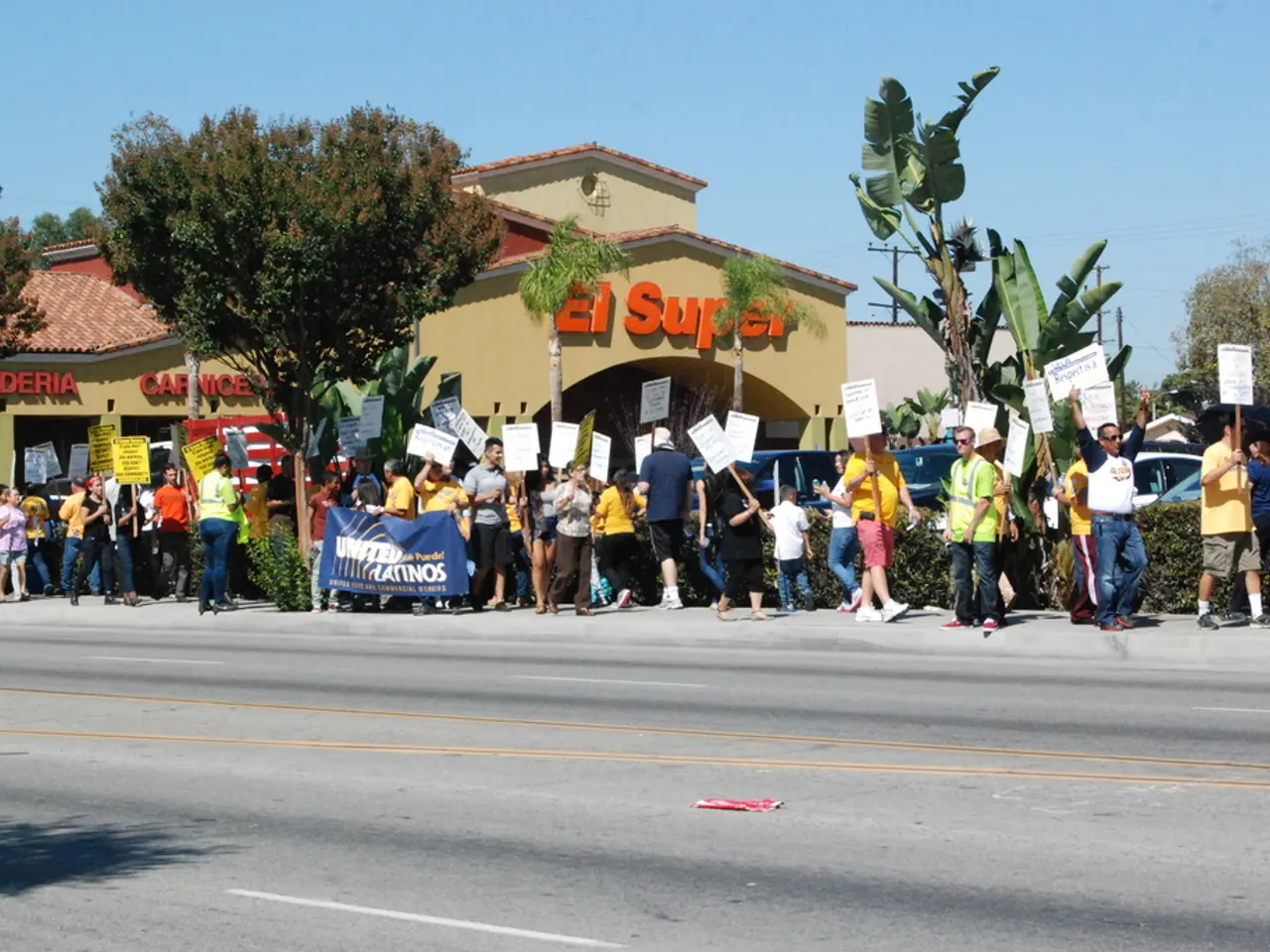Strategies for Losing an Impossible Battle: Reasons Behind Failed Interventions in the Sahel Region
The Escalating Crisis in the Sahel Region: A Complex Web of Conflict and Instability
The Sahel region, encompassing countries like Mali, Burkina Faso, and Niger, is currently grappling with a rapidly deteriorating security situation. Islamist militant groups, such as the Islamic State-Sahel Province (ISSP) and Jama’at Nusrat ul-Islam wa al-Muslimin (JNIM), have intensified their operations, resulting in a significant increase in attacks on military bases and civilian areas [1][3].
Recent attacks, including a June 1 assault by JNIM that claimed around 60 lives in Mali, have been followed by coordinated attacks on multiple military sites, some hosting foreign personnel like Russians [1]. The ISSP has also expanded its reach into southern Niger, where it has killed dozens of soldiers in several coordinated operations [1].
This violence is not isolated, but rather coupled with broader crises, including coups, environmental collapse, poverty, and humanitarian challenges. Women and girls in particular are disproportionately affected, with high rates of abductions and interrupted education [3].
The terrorist threat in the Sahel is not a new phenomenon, with The New York Times tracing its rise back to 2012, when extremist groups began taking advantage of existing grievances in marginalized communities and recruiting young men with few prospects [6].
In terms of international intervention, the United States and other donor countries have acknowledged terrorism in the Sahel as a major problem, but have been criticized for focusing more on commercial diplomacy and trade rather than decisive security interventions [2]. The U.S. military strategy has faced setbacks, such as a fatal ambush in Niger (Tongo Tongo, 2017), which highlighted limited intelligence and challenges in distinguishing militant support within local populations [4].
Meanwhile, U.S. influence in the region has been challenged by other actors, such as Turkey, which has expanded military support and defense cooperation in the Sahel since 2022, including arms sales and possible deployment of private military contractors [5].
The United Nations peacekeeping mission in Mali, MINUSMA, has suffered over 290 deaths and is on track to have the most fatalities of any operation in UN history. However, the mission's potential combat roles and the low motivation of foreign soldiers have led to concerns that it may not provide a solution, but rather add to the casualties without significantly improving the security situation [7].
The governments in the Sahel, including Mali, have been criticized for their poor governance and corruption, with little accountability for their actions. A UN Development Programme study found that lack of jobs, education, and faith in the government were the primary reasons young men joined violent extremist groups, with only 17 percent citing religion as a significant motivating factor [8].
The TSCTP, a program launched in 2005 to counter violent extremism, has failed to significantly improve security in the Sahel region. The updated version of the TSCTP enacted in 2022 aims to combat extremism, increase employment opportunities, promote girls' education, enhance women's political participation, and fight corruption. However, the contents of the updated program are not yet public [9].
In conclusion, the Sahel remains a volatile and rapidly worsening security environment marked by rising jihadist violence and fragile state capacities. International interventions, including those by the United States and the United Nations, have so far contributed only modestly to stabilizing the situation, mostly through limited military engagements and economic diplomacy. Strategic setbacks and regional competition hinder a more effective response [1][2][4][5].
References: [1] BBC News. (2022, June 15). Mali: Dozens killed in attack on military base. https://www.bbc.com/news/world-africa-61883290
[2] The Washington Post. (2022, February 16). Biden's Sahel summit fails to deliver on U.S. military intervention. https://www.washingtonpost.com/world/2022/02/16/biden-sahel-summit-us-military-intervention/
[3] The Economist. (2022, May 14). The Sahel's humanitarian crisis. https://www.economist.com/middle-east-and-africa/2022/05/14/the-sahel-s-humanitarian-crisis
[4] The New York Times. (2017, October 4). Niger ambush kills 4 U.S. soldiers, 2 Nigerians. https://www.nytimes.com/2017/10/04/world/africa/niger-ambush-us-soldiers.html
[5] The Wall Street Journal. (2022, February 16). U.S. faces regional competition in Sahel. https://www.wsj.com/articles/u-s-faces-regional-competition-in-sahel-11645120212
[6] The New York Times. (2012, January 20). In Mali, a Rising Tide of Jihadist Violence. https://www.nytimes.com/2012/01/21/world/africa/in-mali-a-rising-tide-of-jihadist-violence.html
[7] The Guardian. (2022, May 25). UN peacekeepers in Mali: 'We are not soldiers, but we are forced to fight'. https://www.theguardian.com/global-development/2022/may/25/un-peacekeepers-in-mali-we-are-not-soldiers-but-we-are-forced-to-fight
[8] The Washington Post. (2020, October 22). Lack of jobs, education and faith in government drive young men to join extremist groups in Sahel, U.N. study finds. https://www.washingtonpost.com/world/2020/10/22/lack-jobs-education-and-faith-government-drive-young-men-join-extremist-groups-un-study-finds/
[9] The New Humanitarian. (2022, February 2). Sahel strategy: What's new in the updated TSCTP? https://www.thenewhumanitarian.org/news/2022/02/02/sahel-strategy-whats-new-updated-tsctp
- The escalating crisis in the Sahel region, marked by a rise in jihadist violence and fragile state capacities, necessitates a comprehensive counterterrorism strategy involving national security forces, intelligence agencies, and the military to counter militant groups like the Islamic State-Sahel Province (ISSP) and Jama’at Nusrat ul-Islam wa al-Muslimin (JNIM).
- As regional competition intensifies, politics and military strategy in the Sahel become increasingly complex, with actors like Turkey expanding military support and defense cooperation since 2022, posing a challenge to the United States' influence in the region.
- In this volatile environment, general news sources report that recent attacks have targeted military bases and civilian areas, causing high casualties among both soldiers and civilians, particularly women and girls who face disproportionate rates of abductions and interrupted education.
- To address the roots of the crisis, strategies must not only focus on traditional defense and security interventions but also address broader issues such as unemployment, lack of education, and corruption, which have been identified as primary reasons young men in the Sahel are joining violent extremist groups.
- Amidst these challenges, the international community, including the United States, must critically evaluate their interventions in the Sahel region and strive for more effective strategies that can bring a lasting end to the violence and instability plaguing the region.







